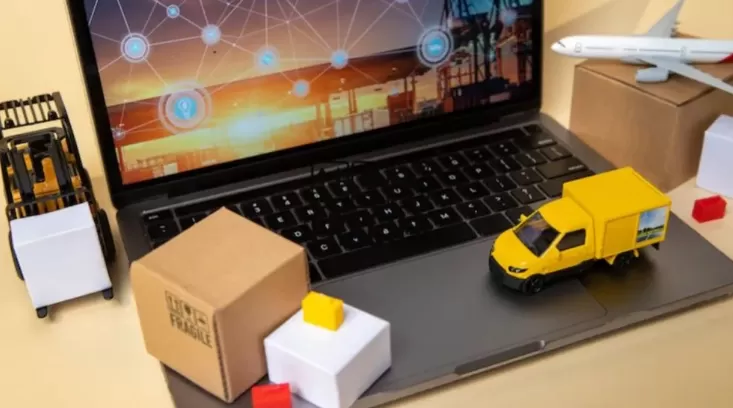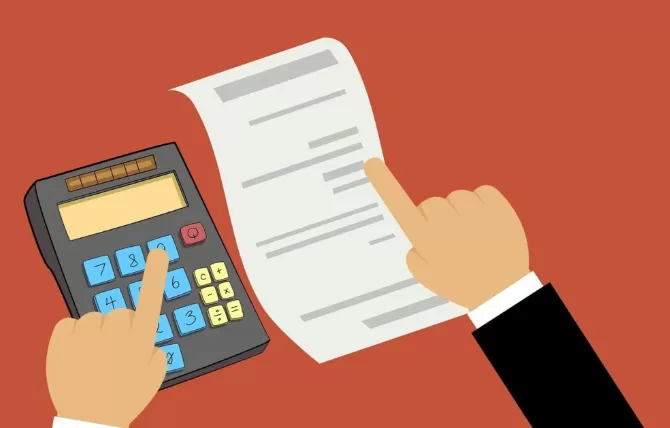This guide and the benchmark ranges apply to main China → US commercial lanes and assume standard cartons/pallets shipped on common routings (e.g., Shanghai/Guangzhou → major US gateways). Estimates exclude special permits, hazardous goods handling, and exceptional peak-season surcharges (e.g., congestion/PSS during Jul–Oct). Unless stated otherwise, sample cost figures assume normal service levels (no express surcharges), typical carton density, and standard FBA pallet requirements. Always confirm live lane-specific quotes with your forwarder.
Quick answer (updated with date & sources)
Quick answer (one line)
Door-to-door FBA shipping cost = Freight + Import duties & taxes + Customs & broker fees + Insurance + Drayage & last-mile + FBA prep / 3PL fees.
Ballpark benchmark ranges (market snapshot) — estimations as of 2025-09-11 (use only as sanity checks; obtain live quotes):
Air: ≈ $3.5–$6 / kg.
Express (parcels): $12–$40 / kg (DHL/UPS/FedEx — parcel service).
LCL: ≈ $60–$140 / cbm.
FCL 40' (spot): ≈ $2,000–$5,500 / 40'.
Drayage (illustrative): varies widely by port & distance — $400–$1,800+ per 40'.
Sources & sanity checks: Freightos FBAX, FBABEE, ArdiExpress market references. Always request itemized DAP and DDP quotes from 2–3 forwarders and compare the main-leg number against a market index before booking.
1) What searchers really want (summary)
Users searching “Amazon FBA door-to-door shipping costs” want:
Fast, usable ballpark rates to budget.
A breakdown of all cost components and who typically pays what.
Reproducible landed-cost examples (DAP vs DDP).
Operational steps and copy-ready templates to request apples-to-apples quotes.
Benchmarks to validate forwarder quotes.
This article satisfies all of those needs.
2) Core cost components (what you will always pay)
Main carriage (ocean / air / express) — base transit leg.
Import duties & taxes — driven by HS code and declared customs value.
Customs broker & entry fees — flat or per-entry + disbursements.
Insurance — recommended for FCL/LCL and high-value goods.
Drayage & last-mile — port → Amazon / warehouse. Major swing factor by port.
FBA prep & 3PL fees — labeling, palletization, rework if rejected.
Practical note (who pays / who advances): duties/taxes are generally paid at entry. Under DDP the seller (or seller’s IOR) pays duties up front; under DAP the buyer pays on arrival and must arrange a broker.
3) Market benchmarks (use only as sanity checks)
Assumptions: China (Shanghai/Guangzhou) → major US gateways; standard cartons; normal service levels. Confirm live quotes.
Air freight: $3.5–$6 / kg.
Express (DHL/UPS): $12–$40 / kg (parcels).
LCL: $60–$140 / cbm.
FCL 40': $2,000–$5,500 / 40' (spot).
Drayage: $400–$1,800+ per 40' (depends on port → inland distance, chassis, fuel).
Always check forwarder quotes against Freightos FBAX or similar indices.
4) How to estimate a door-to-door landed cost — step-by-step
Formula:
Landed cost = Product cost + International freight + Insurance + Duties/taxes + Broker/clearance fees + Drayage + FBA prep fees
Worked example (reproducible)
Assumptions: 1,000 units; unit price $5.00; allocated ocean freight $1,800; insurance 0.5%; duty 5%; broker $200; drayage $600; FBA prep $0.35/unit.
Goods = $5,000
Ocean freight = $1,800 → $6,800
Insurance (0.5% of goods = $25) → $6,825
Broker = $200 → $7,025
Duty (5% of goods = $250) → $7,275
Drayage = $600 → $7,875
FBA prep = $350 → Total = $8,225 → $8.225 / unit
Interpretation: compare the total landed cost between DAP and DDP scenarios — don’t compare only the base price.
5) DAP vs DDP — which to choose, and an Incoterms note
Incoterms version notice
Definitions and obligations below follow Incoterms® 2020. Note: DAT (Delivered At Terminal) was replaced by DPU (Delivered at Place Unloaded) in Incoterms® 2020. Always specify “Incoterms® 2020” and the exact named place (e.g., “DDP Jackson, MS — Incoterms® 2020”) in contracts.
DAP (Delivered At Place)
What seller does: deliver goods to the named place in destination country, arranged carriage to that place.
What seller does NOT do: does not clear import or pay duties/taxes.
What buyer does: clear import, pay duties/taxes, and handle any destination charges.
When to use: buyer has local customs capability and prefers to control local clearance to reduce cost or leverage a trusted broker.
DDP (Delivered Duty Paid)
What seller does: deliver goods to the named place and clears import, pays duties/taxes and local charges. Seller bears maximum obligation.
What buyer does: minimal handling at destination (receive goods).
When to use: buyer lacks local presence, wants predictable landed cost, or needs a “turnkey” solution for FBA delivery.
Practical cash-flow reminder: DDP often carries a seller IOR fee and cashflow burden (seller or IOR must front duties). Ask for customs entry number (e.g., CBP entry#) and duty receipts on delivery when you buy DDP.
6) Negotiation & contract language (short, copy-paste clauses)
Use in POs or contracts and replace bracketed fields.
DAP clause (sample)
Incoterm: DAP [Named Place] — Incoterms® 2025. Seller will deliver goods to [Named Place], cleared for export and ready for unloading. Buyer is responsible for import clearance, import duties, taxes, and any local charges. Seller arranges main carriage to the named place.
DDP clause (sample)
Incoterm: DDP [Named Place] — Incoterms® 2025. Seller shall arrange and pay for all transport, insurance, export and import clearances, duties, taxes and any local charges necessary to deliver the goods to [Named Place], ready for unloading at buyer’s premises or designated warehouse.
IOR clause (sample)
If Seller cannot lawfully act as importer under DDP, Seller may appoint an Importer of Record (IOR). IOR fees, duties and taxes shall be included in the DDP price or invoiced as agreed.
7) Practical quote request checklist (send this to forwarders)
Include these fields to get apples-to-apples door-to-door quotes:
Origin city / port & export country
Destination: “Amazon FBA [warehouse code]” or exact delivery address
Incoterm requested: DAP or DDP (state which)
Total CBM & gross weight (kg)
of cartons / pallets, pallet dimensions
Commodity description + HS code (if known)
Value for customs (per unit & total)
Preferred ETD / required delivery window
Sample subject line: Quote request — DDP to Amazon FBA [Warehouse code], Jackson, MS — Origin: Shanghai — ETD [YYYY-MM-DD]
8) FBA operational checklist (must-do)
Create shipment plan in Seller Central and generate FBA Box IDs / Pallet IDs before shipping.
Send FNSKU list, carton contents, dimensions and weights to supplier & forwarder.
Confirm pallet specs (40×48 in standard) and pallet height/weight limits.
Forwarder must confirm Amazon appointment process and provide appointment ID.
Ensure ISF (ocean) is filed; obtain the filing ID for traceability.
Retain POD / ASN after delivery for claims.
If FBA rejects shipment: capture photos, get rejection reason, save POD, and decide remediation (re-label, rework, or return). Keep records for dispute or insurance.
9) Cost-saving tactics that work
Split modes: air for urgent SKUs, sea for remainder.
Consolidate: move to co-load or FCL once monthly volume justifies it.
Avoid peak windows: book early for Q3/Q4 and China holiday periods.
Negotiate term rates: if volume predictable, lock period rates to reduce spot volatility.
Optimize packaging: reduce dim weight for air/express and optimize pallet stacking for sea.
10) How to validate a forwarder’s DDP duty estimate (3 quick checks)
Ask for HS code used and the duty rate applied; verify via official tariff lookup.
Check CIF value basis used for duty calculation (is the forwarder including all charges?).
Require provisional entry evidence (entry number or duty payment receipt) after import — if seller claims DDP, they must produce proof.
FAQ
What records should I keep after an FBA door-to-door shipment — and for how long?
Keep: commercial invoice, packing list, bill of lading / AWB, ISF filing ID, customs entry (entry#), broker invoices, POD/ASN, insurance policy and claim docs, and any Amazon rejection notices.
Retention: keep digital copies at minimum for the duration your broker/insurance requires; a practical window is at least 3 years; for high-value or regulated goods keep 5+ years and follow local rules.
ISF / pre-arrival filing mistake — how do I fix it?
Contact your forwarder or filer immediately.
Submit an ISF amendment with corrected fields (HS, consignee, etc.).
Expect amendment fees and slower release — track the filing ID and notify your US broker so they can monitor the shipment. Act fast; delay increases risk of hold/penalty.
Amazon FBA rejects the delivery — what exact steps should I take first?
Stop further action; document everything: take photos of pallets/labels, save carrier POD, capture Amazon rejection notice and reason.
Notify your forwarder and the Amazon channel immediately; request written rejection detail.
Decide: remediation (relabel/rework), redirect, or return — get cost estimates before approving. Keep all evidence for claims/chargebacks.
How do demurrage and detention fees accrue and how can I avoid them?
They start after free time at port (demurrage for container at terminal; detention for chassis/container in gate-out).
Avoidance: confirm cut-off/return windows, pre-book pickup appointment, have clearance docs ready, and coordinate truck + yard slots early. Monitor ETA/ETD and act if delays occur.
What does an IOR (Importer of Record) fee normally cover and what should I request in the quote?
Typical components: admin fee for IOR registration, duty/tax disbursement, broker entry fee, and possible margin on duties.
Ask the provider for: itemized IOR fee, duty pass-through mechanism, proof of payment (entry#/invoice), and POA or contract wording.
Customs changes classification — my HS code is disputed. What’s the practical route?
Immediately provide technical product documentation to your broker (spec sheets, photos, manufacturer statements).
Request a provisional entry while pursuing a formal ruling or submit a post-entry protest/appeal as advised by customs counsel.
Track financial exposure (estimated under/over-payment) and keep clear audit trail.
How should I audit a forwarder’s final invoice?
Reconcile: quoted line items vs final invoice (origin handling, main carriage, surcharges, import charges, drayage, disbursements).
Verify backup: B/L/AWB, terminal receipts, broker invoices, customs entry receipts, carrier POD.
Question any unexplained surcharges and ask for supporting receipts before paying.
Can I insure only part of a multimodal shipment — and how do partial claims work?
Yes — you may insure full shipment value or a declared partial value. Policy must note which HBL/house AWBs or B/Ls are covered.
For claims: file with insurer promptly, submit packing lists, supplier invoices, B/L/AWB, POD, damage photos and survey report. Partial losses follow the pro-rata policy wording.
Large, heavy or oversized pieces — any special handling tips for FBA door-to-door?
Identify oversized items early — check Amazon size/weight thresholds and carrier acceptance for heavy pieces.
Use flat racks/open top or project cargo solutions for oversized pieces; pre-book specialized equipment and trucking.
Confirm delivery windows and lift/yard capabilities at the FBA or receiver to avoid refusals.
How do I reduce FBA prep fees across many SKUs (practical tactics)?
Consolidate packing standards: uniform carton sizes and pallet patterns.
Pre-label or pre-prep at origin (supplier or China 3PL) under a service agreement — cheaper than US rework.
Group like SKUs to pallets to minimize per-unit handling; negotiate per-unit or per-pallet caps with your 3PL.

 EN
EN
 FR
FR
 ES
ES
 JA
JA
 PT
PT
 RU
RU
 AR
AR








